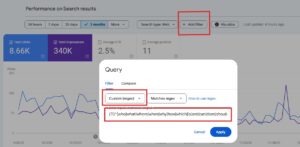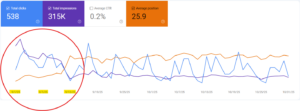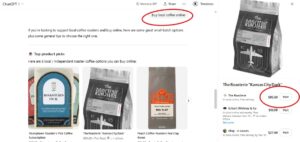For those looking to boost traffic to their website in 2022, link building is a key off-page SEO strategy that must be implemented into your site. To rank higher on search engine result pages (SERPs), your website needs quality content with links. However, building great inbound links can be a challenge, and if done incorrectly, it may cause harm to your site or your site’s ranking may stay the same rather than improving.
It’s important to implement link building strategies that line up with Google’s terms and conditions. Although Google tends to accept all link building strategies, the search engine may or may not improve your ranking depending on the tactics you use. This is because link building is a core ranking factor in the Google algorithm; without advanced link building techniques, Google may not reward your website with higher rankings because the search engine may not recognize your site as reputable.
However, with the right approaches to link building, your website can be rewarded with more traffic, more authority, and higher-ranking positions on Google and other search engines.
Table of Contents
- Maintain a Steady Blog
- Write Guest Blog Posts
- Track Your Own Backlinks
- Track Your Competitor’s Backlinks
- Monitor Mentions of Your Brand
- Broken Link Building
- Use a Reputable Outreach Platform
- Create Free Tools on Your Website
- Create and Use Infographics
- Stay Active on Social Media
- Create Case Studies About Client Success Stories
- Build Connections with Other Brands
- Consistently Interact with Your Audience
What Are Backlinks?
To implement effective link building strategies in 2022, you should have a thorough knowledge of backlinks and how they work. Backlinks, or inbound links, are links found on external sites that link back to a page on your website, ultimately increasing your website’s traffic.
Inbound links are often confused with outbound links, but these two types of links are very different. Outbound links are any links on your site that link to an external website, whereas inbound links, or backlinks, are linked back to you. For example, if another website posts a blog related to your company’s niche and includes a link to your site, readers may click these links, giving your site the benefit of more referral traffic.
When seeking out backlinks, focus on quality over quantity. Reputable sites with a higher domain authority (DA) can help you rank higher in SERPs versus low-quality links. Your site’s links will be most effective when you earn backlinks from high-quality sites in your industry.
What is Link Building?
Link building is an off-page SEO strategy where website owners seek to earn inbound links from other websites. Good link sources can produce more referral traffic that will appear in your site’s analytics. Additionally, the link itself is a powerful signal to the Google algorithm for your site to rank higher.
Each major search engine has its own algorithm to decide your site’s rankings by looking at the quality and quantity of links in correlation with your content. When done correctly, inbound links from external sites will boost your credibility, help you gain referral traffic, boost your site’s domain authority, and increase your rankings in SERPs.
It’s important to remember that link building strategies won’t work instantly. Like other key SEO tactics, link building is a gradual process that must be implemented over periods of time to see the best results.
Top 2022 Link Building Strategies
As you start to implement link building tactics for your site, avoid low-quality links that don’t get traffic or use poorly-written content. Links that are acquired from low-quality link sources could be flagged by Google, and if your link building strategies go against Google’s webmaster guidelines, the search engine could potentially penalize your website.
Let’s look at our top recommended SEO link building strategies for 2022, and how you can use these strategies to improve SEO results for your site.
1. Maintain a Steady Blog
The best Google-friendly way to generate backlinks is to write great content and consistently post it to your website. Content should be related to your industry and help the reader find the information they’re looking for.
Great blog content not only makes your reader naturally want to link to it, but search engines also recognize that your company is providing valuable information. When this happens, search engines like Google are more willing to increase your organic rank since they know the content on your website is trustworthy.
Furthermore, Google looks to add valuable content to SERPs for the FAQ and knowledge panel sections. The search engine can potentially add your content to these resource sections as an authority on certain topics, allowing users to quickly find valuable information and reference materials from your content.
Keep in mind that just adding a blog to your website doesn’t make your SEO better. Maintaining a steady stream of quality content that can be used by others for resources is the reason why so many search engine optimizers champion blogging.
Creating a great blog also involves updating content as more information becomes available. Older blog posts should be revamped to include more valuable and relevant keywords. Information that’s up to date is more likely to be linked to from other sites than outdated blog posts that are no longer accurate.
2. Write Guest Blog Posts
Guest blogging is a strategic way to earn quality backlinks while also displaying your expertise on certain topics. This is a very popular backlink strategy that can increase traffic to your site and lead to higher rankings.
It’s best to shop around for blogs and news providers that fit into your industry, attract your audience, and are willing to accept your content in exchange for an inbound link. Start by reaching out to publications in your specific niche, where you’re more likely to be viewed as an expert.
The key ingredient to guest blogging is to make sure that whatever is published is unique and has not already been published somewhere else on the internet. Be wary of writing for sites that produce duplicate content. Your content may not perform as well on these sites, which could potentially hurt your organic rank.
However, oftentimes new brands or small- to medium- sized companies have to start off small on these lower-authority sites in order to work their way up to having a larger voice in the industry. In this instance, posting your content on a lower-authority site isn’t necessarily a bad thing.
3. Track Your Own Backlinks
As you use different link building strategies, track and analyze the backlinks you’ve acquired to make sure they are still live and not broken. If you don’t keep track of your backlinks, you won’t fully understand the organic traffic dips that may occur in your site’s analytics.
Unfortunately, you can’t control what other sites or blogs do if they link to you. After a while, they may remove the link without you ever knowing, resulting in a 404 error when you try to visit the URL. Monitoring your backlinks is the best way to ensure your link building method remains successful long-term.
Programs like SEMRush can be used to track your website’s backlink activity and whether you receive more or fewer links from one period to another. You can also upload the backlinks you have received and keep track of their status to ensure they don’t become broken. If your site isn’t seeing any backlink growth, it may be time to re-strategize.
4. Track Your Competitor’s Backlinks
Just like how you should track your own backlinks, you should also track your competitor’s—especially if their site is ranking higher than yours. Spying on your competitor’s backlinks is a great way to find opportunities where you can obtain similar links and attempt to replicate the best ones for your site.
You can use different link analysis tools to monitor your competitor’s backlinks, such as Ahrefs’s Site Explorer or Moz’s Link Explorer. As you perform regular backlink research, see what types of content your competitors receive their best links for, what keywords they are ranking for, and what other strategies they may be using to be successful.
If you can replicate what your competitors are doing, you’re more likely to find high-value link opportunities. Sites in your industry that post your competitor’s content could potentially post yours too, so always check what types of blog posts are earning the most backlinks and use this research to your advantage.
5. Monitor Mentions of Your Brand
Social listening tools, like Google Alerts, are great for tracking instances when other websites mention your brand. If the mention doesn’t link back to your site, try reaching out to the website owner to see if they’ll turn your mention into an inbound link.
If your brand is linked, but the link is broken, you can also request that they fix this error. This is called link reclamation, and it is a very effective link building strategy. It’s especially important to reclaim links when other sites cite data or other information directly from your website.
You may be hesitant to email a webmaster you don’t know, but keep in mind that your company is probably already known and well-liked if they mention you in a positive way. This gives you a great opportunity to request that your website be linked.
6. Broken Link Building
Over time, brands in your industry may move their website to a different URL or even go out of business. When this happens, their inbound links on other sites become broken and turn into 404 errors, giving you the perfect opportunity to sell your site as a worthy replacement.
Broken links on other sites can be identified using on-page technical SEO strategies like site-crawling tools or SEMRush. You can research and monitor the backlinks of your SERP competitors to find broken links where your brand may qualify as a replacement.
If you find broken links, politely inform the webmaster of the 404 error and provide them with your own content to consider as an alternative. Being personable in this situation may even help you form a professional connection with the website owner, which could bring you more backlinks in the future.
When you take advantage of broken link building, always make sure that your content is relevant enough to be considered a replacement. Many web admins may replace the link with the one you supply as a token of gratitude, but the content still must make sense in the context of their site.
7. Use a Reputable Outreach Platform
Using a reputable outreach platform as a link building strategy enables you to find relevant websites or bloggers to email and connect with. If you have a great piece of content, a company-related press release, or industry knowledge to share, you can reach out to these platforms to try to earn a backlink.
There are many benefits to forming professional relationships with other reputable brands in your industry. Having your content in industry-related publications or the press will help you build up your brand, improve your credibility, and receive backlinks from higher authority sites.
One popular outreach platform is HARO (Help A Reporter Out). Journalists are always seeking out expert knowledge in an abundance of different subject matters. If you can answer their requests for information or voice your own opinion on certain topics, a source link back to your site may be included in the article.
8. Create Free Tools on Your Website
Your audience is more likely to see you as a credible source if you provide them with the information they need. Resource lists, shareable templates, or other free tools on your website are perfect for providing helpful knowledge to your target customers.
These resource lists or tools can be implemented and linked into blog posts on other websites, giving you the chance to score backlinks for your company and show off your expertise.
9. Create and Use Infographics

Infographics are everywhere; they are visually appealing, and they provide information to the viewer in a shorter amount of time than reading a blog post. With so many free templates on the internet, creating high-quality and professional-looking infographics has become a little bit easier.
Because of this, it’s important that you continuously create fresh and compelling infographics for your brand and incorporate them into your content—especially as you implement your link building strategy. Earning backlinks from an infographic can be done in three ways:
- Repurpose your website’s current content into an infographic that can be distributed to photo or video-sharing websites, which can then link back to you as the original source.
- Perform reverse image searches on Google to find where your infographic has been posted and reach out to reclaim those links.
- Embed an HTML code snippet onto the infographic on one of your web pages and make the image always link back to your site no matter where it’s being used.
Using infographics regularly can help you earn quality links back to your site, ultimately generating more referral traffic.
10. Stay Active on Social Media
Staying active on social media can help you boost engagement on your site and expose your brand to a wider audience network. The more often you share new posts, images, or updates, the more likely someone new will see it, share it, and link to it.
Additionally, include social media buttons on your website. Any time you post content for your company, such as case studies, ebooks, whitepapers, and blog posts, you’ll want to include your brand’s social media widgets. This ensures that your audience can fine the information they want and can quickly share it with others.
11. Create Case Studies About Client Success Stories
Including client success stories on your website can give you more credibility, which is one of the important elements to earning backlinks. Publishing research materials, like reports and case studies, can help to showcase your knowledge and potentially prove that you are worthy of being considered an expert.
As you put together case studies to be featured on your site, always choose the companies you’ve worked with that have seen the best results, know your products and services well, and are enthusiastic about working with you. If you portray your client in a positive light and comprehensive manner, they may be more willing to link back to you.
12. Build Connections with Other Brands
The connections you build with others in the marketing world can go a long way. You can attempt to earn backlinks for your website by forming real-life connections and partnering with other people. This may include other web admins, companies in similar industries, or individuals you work with one-on-one. In return, you can ask these connections for links.
13. Consistently Interact with Your Audience
Finally, consistently interacting with your targeted audience can help you earn inbound links for your website. You can reach out to your audience and show off your expertise in a variety of ways, including:
- Conducting free webinars
- Administering surveys
- Writing reviews or testimonials
- Speaking at or sponsoring an event
- Showing sneak-peeks of your product
- Giving away free trials
If you’re speaking at a big event, whether online or in-person, your audience may even recognize you as a specialist in your industry. Your attendees can then share information they find informative with others on social media and beyond.
You can even collaborate with another brand, company, or influencer when conducting webinars or giving powerful presentations. This can widen your audience and give you a better shot at earning backlinks.
Following these link building strategies in 2022 is an effective way to gain backlinks and increase your site’s rankings. However, link building can be a time-consuming task that not all companies may have the knowledge or resources to perform.
Rank Fuse Digital Marketing is here for you if you’re looking to implement link building or other off-page SEO strategies in the new year. Contact us today at 913-270-6770 to learn about all the services our agency has to offer!




